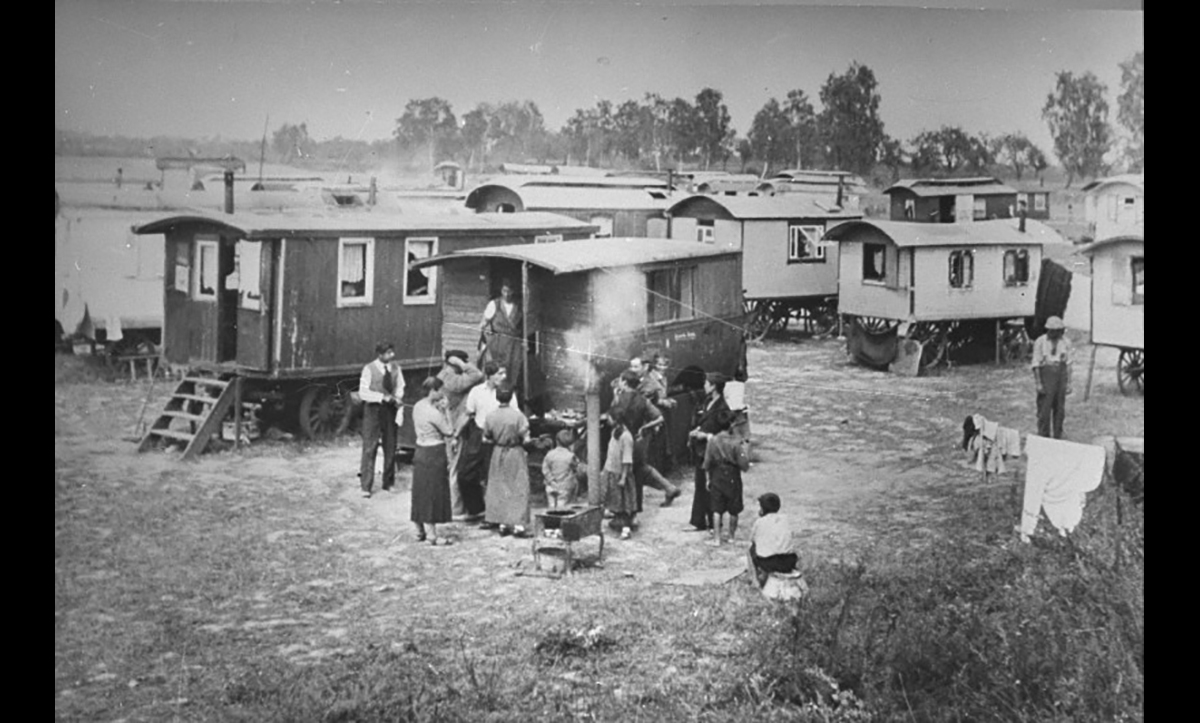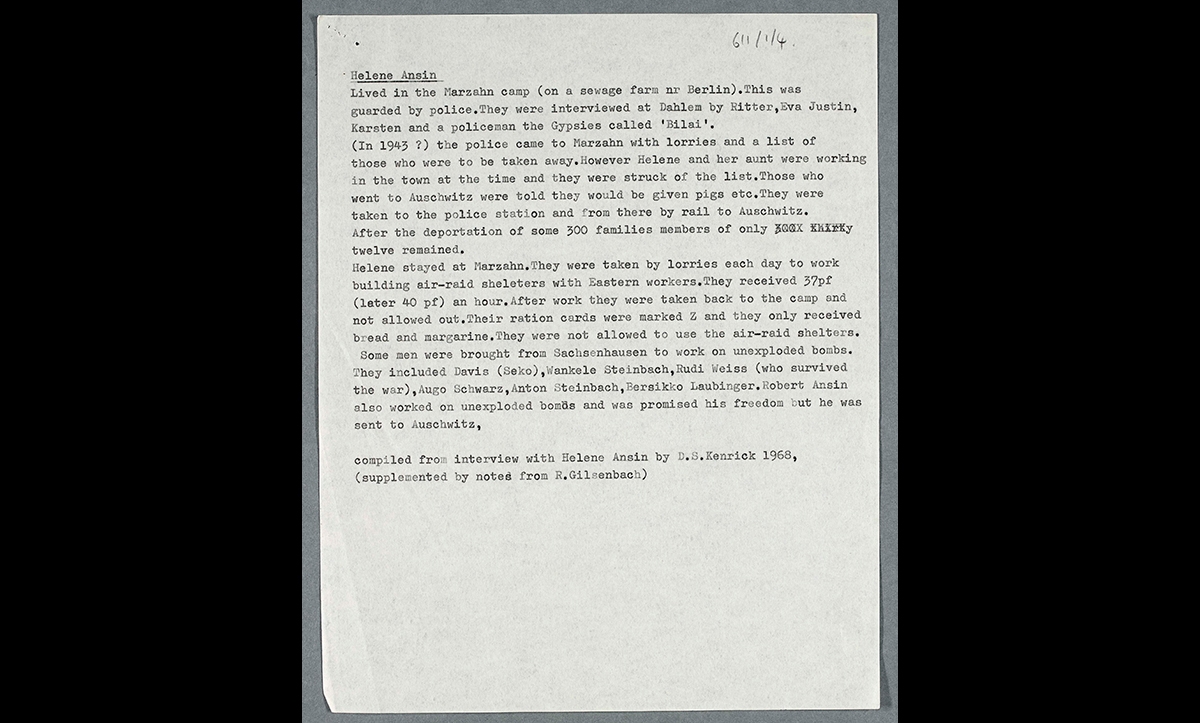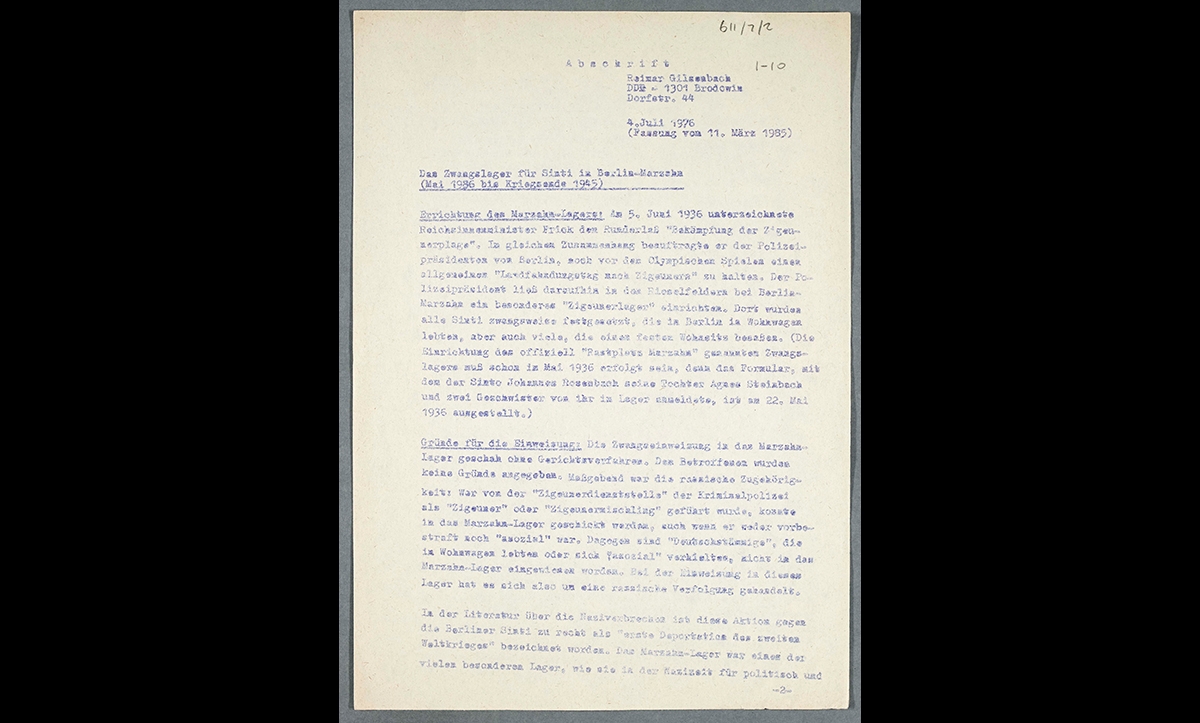On 16 July 1936, following a decree issued by the Reich Interior Minister Wilhelm Frick for ‘Combating the Gypsy Plague’, 600 Roma and Sinti living in Berlin were arrested and taken to the Marzahn detention camp.
This order took place in the context of the city preparing for the 1936 summer Olympic games. Marzahn was one of many other holding camps for Roma and Sinti created in Germany in the late 1930s.
Between 1936 and 1945, 1,200 Roma and Sinti were forced to reside in Marzahn, guarded by Nazi criminal police, the kripo. By 1939, the camp had become the Reich’s largest municipal camp imprisoning Roma and Sinti, with 850 inmates residing there under heightened surveillance. All inmates had to carry a ‘gypsy ID card’, stamped with a large Z and including their fingerprints and photograph.
Living conditions were terrible. In 1936, 600 people lived in 130 caravans, and one barracks building. The camp was located near a cemetery and a sewage dump, which led to the rapid spread of diseases. There were only two toilets for the whole camp, and no medical facilities. Roma prisoners were only allowed to leave Marzahn only to carry out forced labour, often building air raid shelters nearby.
In March 1943, most of the camp residents, approximately 300 families, were deported to Auschwitz-Birkenau on six different transports and murdered there.
Later that year, air raids destroyed most of the buildings of Marzahn, with the remaining Roma and Sinti prisoners living in one of the barracks left standing.
By April 1945 when the camp was liberated by the Soviets, only two dozen prisoners remained, the rest having died of starvation.














